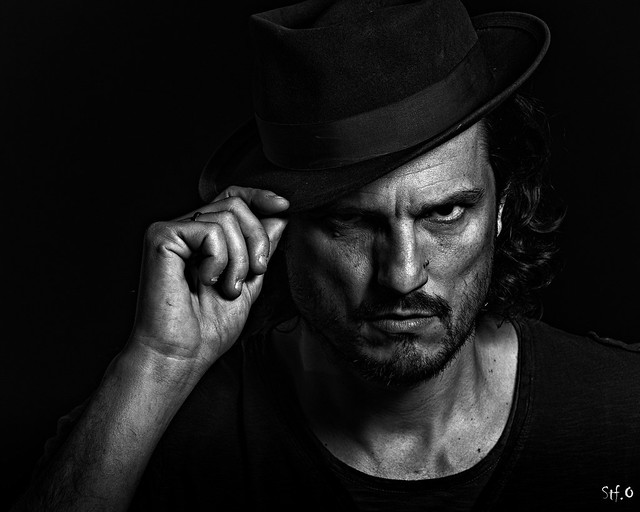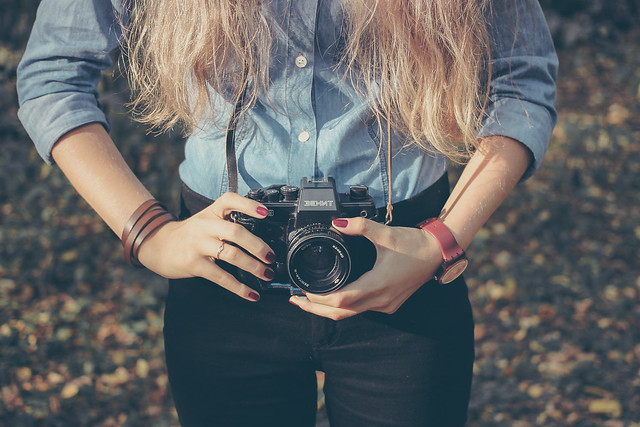Before we get started, note that the key word in the title is “improve.” This isn't about perfecting your photography; the ideas presented here aren't intended to be individual magic bullets that have the power to remedy everything that might be holding your photography back. Improvement — if we are to conceptualize it as growth — is incremental and gradual, not instantaneous. While it’s true that we all learn in different ways, all creative growth starts with an idea; how one perceives and applies an idea will vary wildly and that’s the point. Allowing ourselves to be exposed to the ideas of others and then using those ideas in a way that fits your own style. This is one of the most consistently effective means of avoiding creative stagnation.
With all that in mind, below are a few ideas that I hope will be of assistance to those who are searching for fundamental yet effective ways to improve their photos.
Remember That Lighting is Everything
Flat, dull lighting creates similarly uninteresting photos. Harsh lighting tends to create photos that are unflattering to your subject. These are just a couple of reasons why you hear photographers rave about the “golden hour” or the “blue hour.” When you’re using natural light, time of day is key. So opt for early morning or late evening when the light is soft and flattering, as opposed to midday when the light is harsh. When you’re using flash, it’s all about how you position the light in relation to your subject. You can make beautiful portraits with 3 lights or with 1 light; what matters most is that you use and capture lighting in a way that adds interest to your image. This, perhaps more than any other factor, bears the greatest “make-or-break” potential for your photography.
Choose an Interesting Subject
What is or isn’t an interesting subject is…subjective on many levels, yet there does seem to be some consensus about what things viewers tend to find interesting: people, landscapes, animals, flowers, etc. This doesn’t mean you’re confined to photographing a preselected catalog of subjects, you’re free to shoot whatever you like. If you’re into cardboard boxes, that’s great. But you will have to figure out how to photograph those boxes in an interesting way. Sure, choosing a more traditionally interesting subject in the first place will make your work easier, but you still have to present your subject in an interesting manner. Again, much of what adds interest to a subject is the way it’s lit.
Develop a Keen Eye for Perspective and Composition
Once you’ve found an interesting subject, you need to find an equally appealing visual presentation within the context of the overall image. Apart from lighting, perspective and composition will best help you achieve this. Don’t be content to shoot everything straight-on or at eye level; shoot from above or below your subject — take a non-obvious angle. And never get lazy with composition. Good composition isn’t easily mastered, but you owe it to yourself to work on it. Keep in mind, though, there’s no need to always get fancy with composition. In fact, sticking to the basics is often the best route — use the rule of thirds, fill the frame; you can work your way up to using the golden spiral. Regardless of what perspective you go for or how you choose to compose your shot, your aim is to make sure all the elements in the photo complement one another and hold the viewer’s attention.
Respect the Technique
I’ve never been one to make a huge fuss over technical perfection in photography, pointing to the fact that there have been a great many photos made which lack one or more of the traditional hallmarks of “good” photography — photos that are a bit out of focus or oddly composed or a little noisy/grainy. Indeed, gesture can often have a far greater impact than proper exposure. But let’s be honest, you do have to know what you’re doing with a camera. There is a certain minimum threshold of skill you must acquire before you can pass off your work as “avant-garde” or “abstract” and expect anyone to take you seriously. Learn photography: aperture, shutter speed, depth of field, lighting; learn to get it right in-camera. After that, you can break all the rules you want.
Process Your Photos With Care
Unless it’s your desire to be labeled a “digital artist,” it’s best to avoid a heavy-handed approach to post processing. You will almost always want to perform some degree of post processing on your files, whether it’s sharpening, adjusting levels and curves, fixing white balancing, cropping, or reducing noise. But you want the final image to be somewhat of an idealized version of what you originally imagined for the shot, not something you’ve ‘Shopped the life out of. Additionally, don’t use post processing as a way of attempting to compensate for poor technique (see above). Post processing should serve to maximize the visual appeal of an already strong photo.
These ideas simply serve as a jumping off point; anyone can easily expand and build on each of them. Don’t overthink any of this stuff, though — the most important thing you can do is practice with purpose and it will all come together eventually.

![blocks [EXPLORED]](https://farm5.staticflickr.com/4121/4895250473_023db9cc36_z.jpg)






